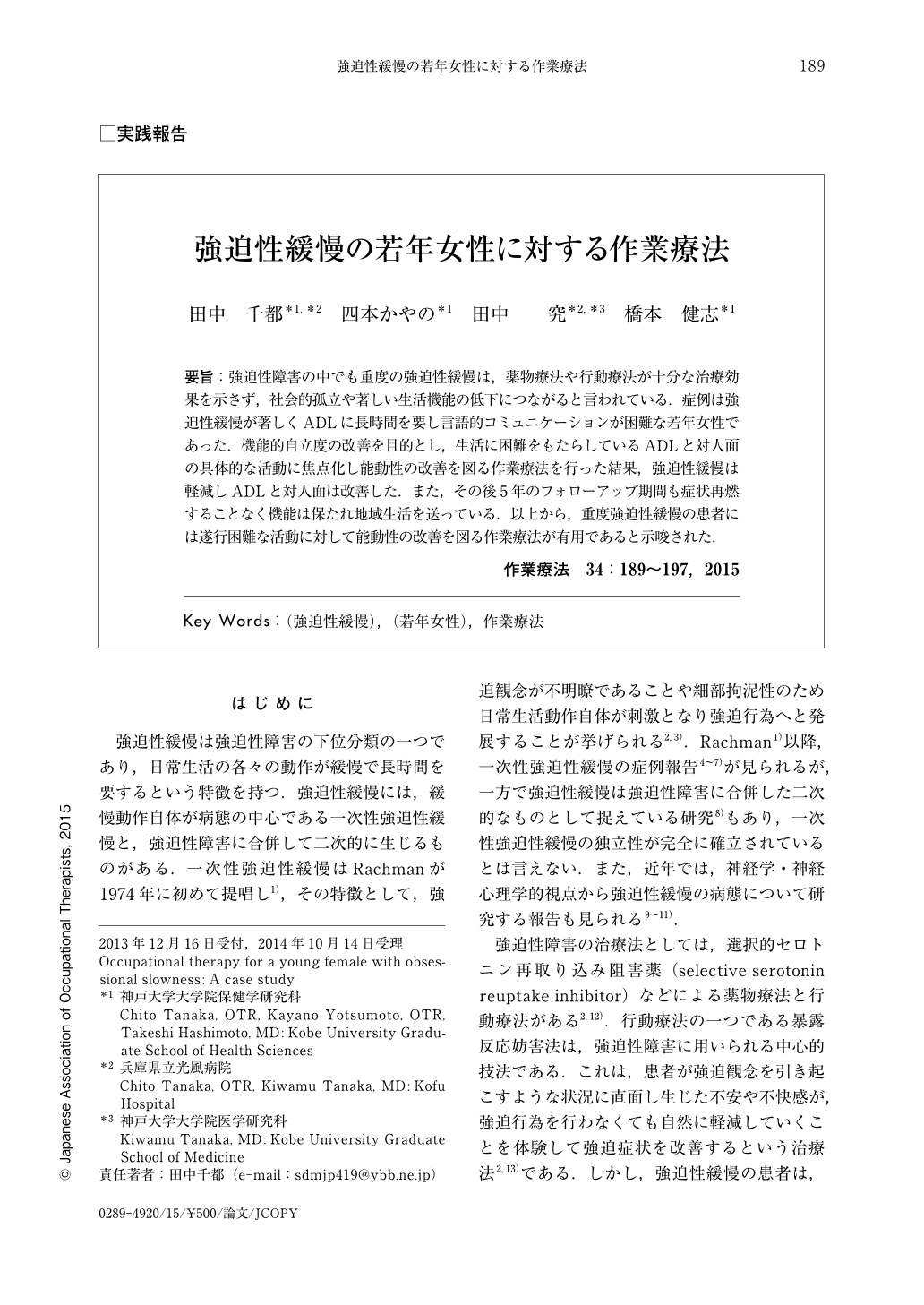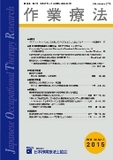Japanese
English
- 販売していません
- Abstract 文献概要
- 1ページ目 Look Inside
- 参考文献 Reference
- サイト内被引用 Cited by
要旨:強迫性障害の中でも重度の強迫性緩慢は,薬物療法や行動療法が十分な治療効果を示さず,社会的孤立や著しい生活機能の低下につながると言われている.症例は強迫性緩慢が著しくADLに長時間を要し言語的コミュニケーションが困難な若年女性であった.機能的自立度の改善を目的とし,生活に困難をもたらしているADLと対人面の具体的な活動に焦点化し能動性の改善を図る作業療法を行った結果,強迫性緩慢は軽減しADLと対人面は改善した.また,その後5年のフォローアップ期間も症状再燃することなく機能は保たれ地域生活を送っている.以上から,重度強迫性緩慢の患者には遂行困難な活動に対して能動性の改善を図る作業療法が有用であると示唆された.
Among the variants of obsessive compulsive disorder, severe obsessional slowness often leads to social isolation and functional deterioration as it does not respond sufficiently to pharmacotherapy or behavioral therapy. The patient included in this study was a young female with severe obsessional slowness who required a substantial amount of time for activities of daily living (ADLs) and had difficulty with verbal communication. To improve her functional independence, we implemented occupational therapy (OT) which focused on specific behaviors of the ADL and interpersonal aspects that were causing difficulties in life, and promoted active performance. OT was implemented during the hospital stay and led to a reduction of symptoms and an improvement of ADLs and interpersonal communication. During the 5-year follow-up period, the patient has experienced no symptomatic exacerbation and has led a functional life in the community. This indicates that OT which promotes active performance in difficult activities is effective for patients with severe obsessional slowness.

Copyright © 2015, Japanese Association of Occupational Therapists. All rights reserved.


